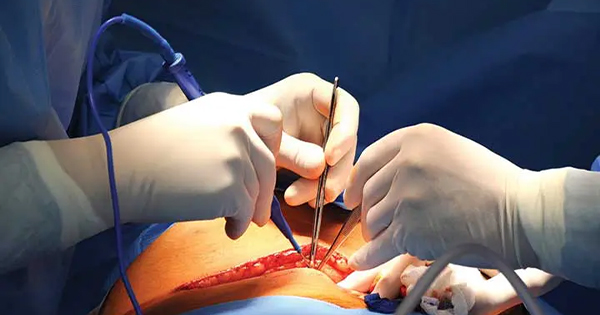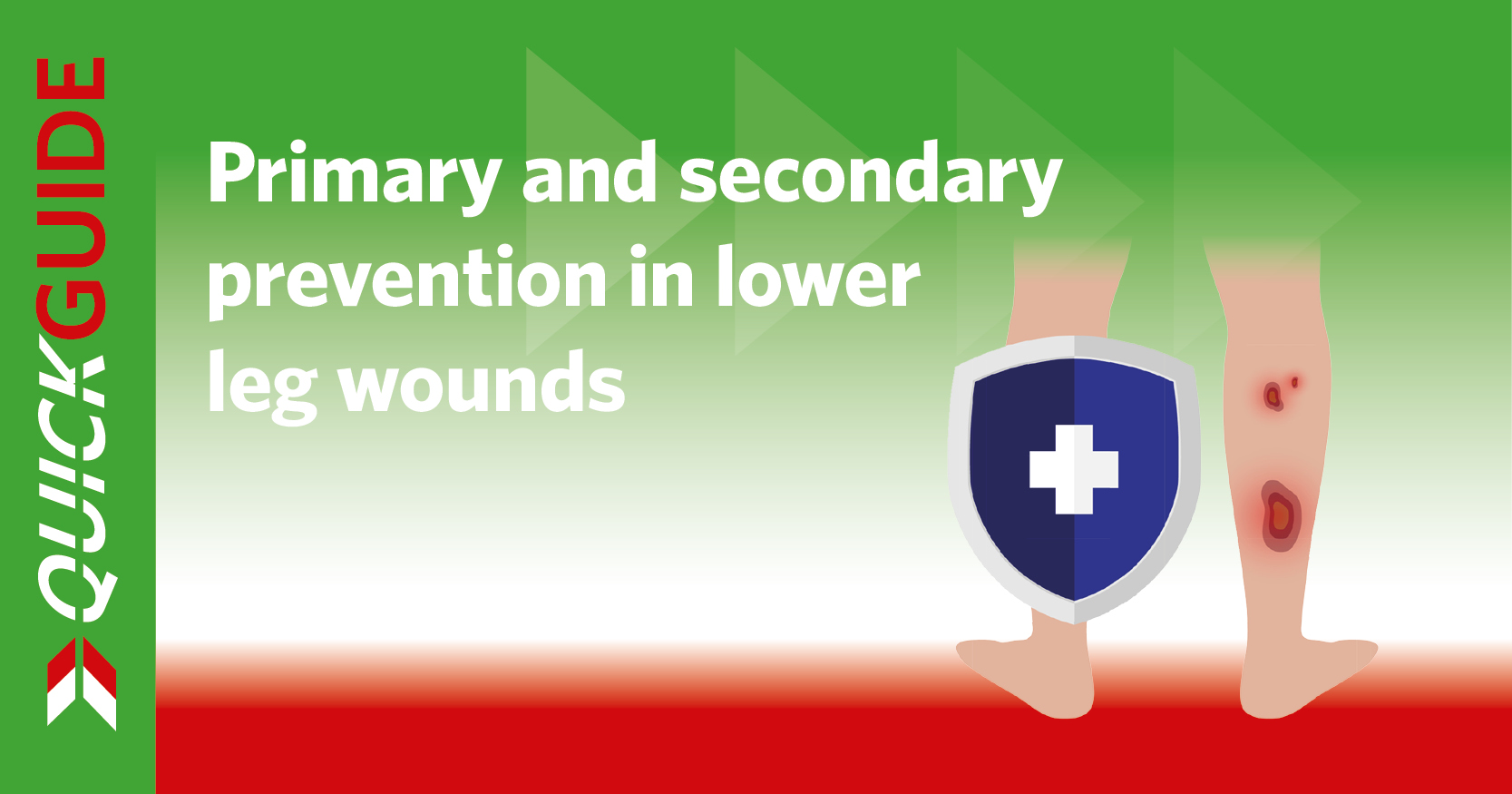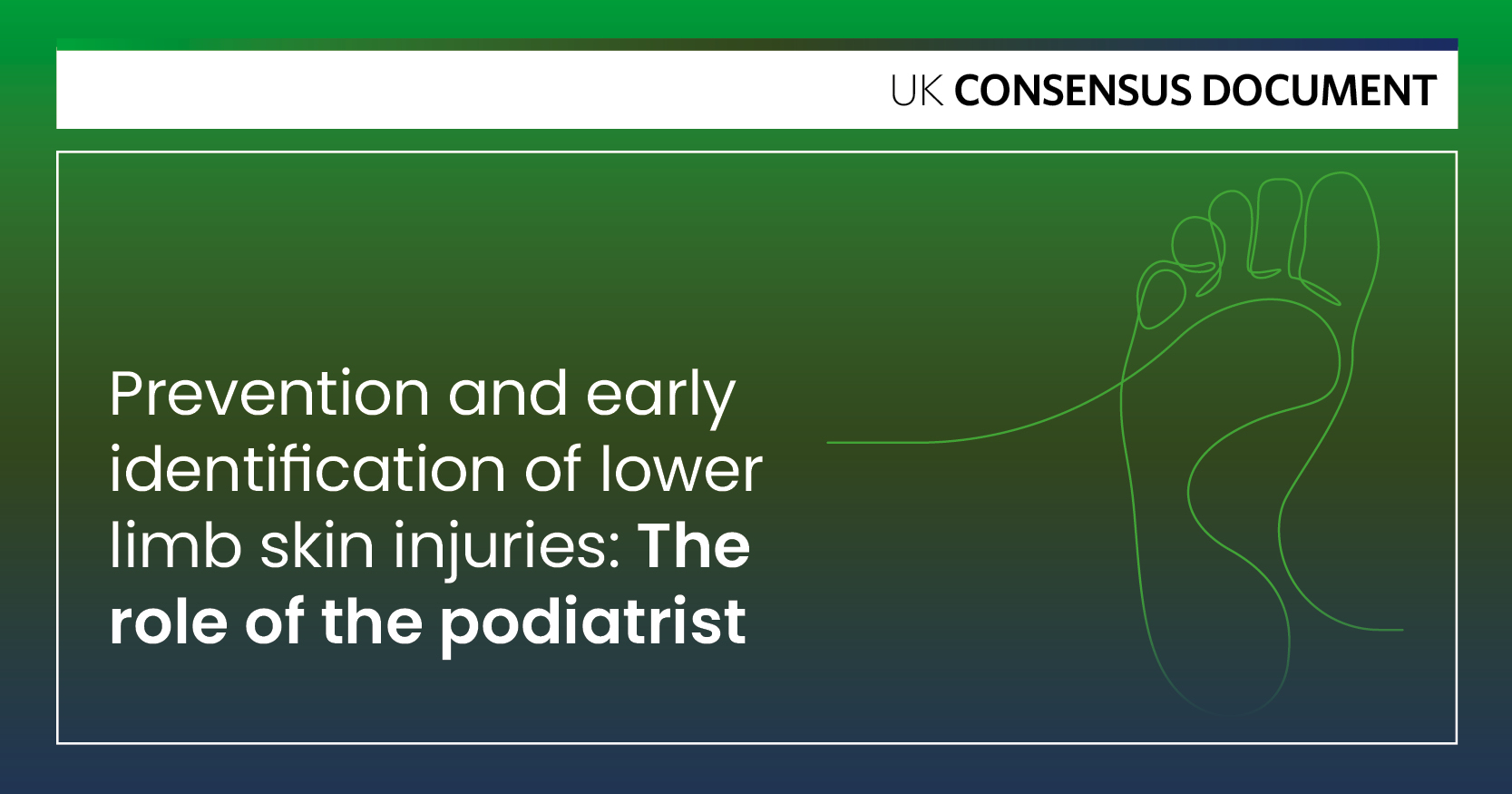Early identification of surgical wound dehiscence (SWD) allows for early interventions and can prevent escalation of a wound complication to a more serious consequence (Sandy-Hodgetts et al, 2022). It is often the patient who first raises a concern, particularly in the community setting, and therefore empowering patients through education enables them to escalate to a healthcare professional in a timely manner. Engaging patients in their care also offers them the opportunity to be involved in prevention and treatment, potential supported self-care,
and plans to prevent further surgical wound complications (SWCs).
Intervention based on assessment
Interventions to treat SWD will be based on a structured holistic assessment of the patient that includes assessment of their general condition and of the dehisced incision. Assessment will provide important information that will guide a patient treatment and care plan including:
- Modifiable factors that may be hindering healing, such as smoking and obesity.
- Any signs of local or systemic infection to enable correct grading and treatment of the SWD.
- Need for further investigations (e.g. blood tests, ultrasound scan).
- The condition of the dehisced area, including clinical signs and symptoms and the wound bed presentation (World Union of Wound Healing Societies [WUWHS], 2018; Morgan-Jones et al, 2023; Sandoz, 2024).
The treatment of SWD based on the assessment should be tailored to the individual patient and requires involvement and collaboration with the patient, family, carers, and the wider multidisciplinary team. Principles of management include:
- Reassurance, management of expectations and education.
- Pain management.
- Removing or modifying risk factors that may have contributed to SWD or that may compromise healing.
- Management of systemic infection.
- Local management of the dehisced wound, including management of local infection (WUWHS, 2018).
The patient’s management plan should be documented in their clinical records with regular review and reassessment.
Managing patient expectations
Wound dehiscence is distressing for patients and their families, and it is important to develop therapeutic relationships that facilitate treatment goals that encompass cultural and environmental factors for the individual patient. Offering reassurance and meeting patient expectations is an essential part of intervention and treatment. With the right education and support, some patients and their families may be able to manage their own wounds (Sandy-Hodgetts et al, 2018). Non-modifiable factors, such as malignant disease or peripheral arterial disease that affect healing and management, need to be reviewed and managed to optimise patients’ quality of life.
Pain management
Pain is often associated with SWD and interventions to reduce and mange pain, both pharmacological and non-pharmacological, should be considered. It is important to understand pain from the patients perspective and patient self-assessment reporting tools, such as a numerical scale, may be useful in achieving this. Pain measurement enables the patient to quantify pain intensity and enables the healthcare professional to determine the effectiveness of interventions aimed at reducing pain, an essential part of wound pain management. Tools recommended for use in acute pain assessment are those that require a quick and easy quantification of pain intensity (Jenkin, 2020).
Education and careful selection of dressings, change frequency and change technique to minimise pain and trauma should be included in the treatment plan. Pain can be associated with infection and, therefore, early identification and treatment of infection can reduce and eliminate pain.
Removing or modifying risk factors
Any modifiable factors that might have contributed to SWD or that have an impact on wound healing, such as poor blood glucose control, poor nutrition or smoking, should also be addressed. Events leading up to the wound dehiscence, for example, coughing and purulent drainage need to be established so that intervention strategies can aim to reduce the risk of further dehiscence (e.g. abdominal support when coughing).
Wound interventions and treatments
The local management of SWD is dependent on the following factors:
- Severity of dehiscence.
- Presence of infection.
- Timing of the dehiscence in relation to the surgery.
- Appropriate intervention based on wound bed preparation (WBP).
An important initial decision in the treatment of SWD is about the most appropriate method for achieving closure of the wound. This will mostly depend on timing in relation to the surgery that produced the incision, the depth of the dehiscence, the location of the incision and whether infection is present. Primary closure may be indicated if the SWD has occurred within 48 hours of surgery and is clearly the result of a technical issue (e.g. clips have come undone). It may also be indicated if no other problems have contributed to the SWD, such as infection (WUWHS, 2018). Delayed primary closure is usually necessary in the management of deeper SWD where the incision is contaminated or infected, or where the risk of recurrence of dehiscence is high because of underlying comorbidities or subcutaneous/visceral swelling that would put tension on a resutured incision. Secondary closure is frequently used in superficial SWD with or without infection and where there is a considerable risk of SSI, presence of infection, or where primary closure is not possible (WUWHS, 2018).
Management: SWD grading
Grading of the SWD to determine the most suitable intervention is critical for effective intervention and treatment. The consensus group (Morgan-Jones et al, 2023) agreed that standardisation is important and recommended the use of the Sandy grading system (WUWHS, 2018) to determine the severity of the dehiscence and subsequent treatment intervention, see Table 1. Currently, there is little understanding of any system for grading of the SWD; the Sandy grading system is largely unknown in clinical practice. Therefore, a simpler, less complex version and/or training and support may be required.
Dressing selection
Dressing selection plays a key role in SWD management and WBP. To improve outcomes for incision care, appropriate dressing selection should be carried out according to local protocol, with consideration given to wound status, surgery type and individual circumstances (Sandy-Hodgetts and Morgan-Jones, 2022). Management of abscess, seroma and haematoma (if present) is a critical first step to reduce incisional tension if a partial dehiscence is present and to remove pus as a potential source of ongoing infection (WUWHS, 2018). Dressing selection should be based on a full holistic assessment of the patient and their wound, taking into consideration the individual’s history, any comorbidities and infection risk. Local wound management can then be guided by the application of the TIME framework and associated clinical decision support tool, with consideration to the removal of non-viable tissue (debridement), management of infection, exudate control and promotion of a moist wound healing environment (Schultz et al, 2003; Dowsett and Ayello, 2004; Dowsett and Hall, 2019; Moore et al, 2019).
Wound bed preparation
Cleansing and debridement is necessary to remove devitalised tissue, and dressing that protect granulation tissue should be used when the wound is fully debrided and free from infection. Infection prevention strategies are necessary to prevent SWCs, and to avoid overuse of antimicrobials and subsequent resistance (Wounds UK, 2020).
There is a misconception that SWD is synonymous with infection (WUWHS, 2018) and correct use of the grading system and identification of clinical signs and symptoms of infection will determine the treatment plan. Identifying the presence of infection will be based on clinical diagnosis, using recommended best practice guidance, see Table 2 (IWII, 2022). Systemic infection will need to be treated with appropriate antibiotics, with the right dose for the right duration.
Local infection should be managed with wound cleansing, debridement and appropriate us of antimicrobial dressings with regular reassessment and review. Topical antimicrobials should not be used indefinitely (IWII, 2022). Use should be reviewed after two weeks (the ‘2-week challenge’) if monitoring has not indicated that review should take place sooner. If after two weeks the SWD has improved, the antimicrobial should be discontinued. If the SWD has not improved, the patient and the wound should be reassessed, and consideration given to changing the topical antimicrobial to a different agent for a further 2-week challenge (IWII, 2022). Patients should be escalated for specialist wound care advice for ongoing management.
The dressing selected should be of an absorbency that maintains a moist wound environment without leakage or causing periwound skin damage, and that allows for a suitable interval between dressing changes. Wounds that are infected require more frequent monitoring than uninfected wounds and so are likely to require more frequent dressing changes.
Negative pressure wound therapy (NPWT)
There is growing evidence that the use of advanced active therapies, such as NPWT, can be effective and improve outcomes for patients when used earlier in the patient’s care plan, rather than waiting for the wound to potentially deteriorate and become more difficult to treat or heal (Dowsett et al, 2017; Hampton et al, 2022). However, there are misconceptions that hamper the use of active treatments — e.g. they are viewed as more expensive.
While active treatments can appear to be more costly when just looking at unit cost, they may reduce healing time with potential cost savings, if used correctly (Hampton et al, 2022). Therefore, active therapies may also reduce overall costs if used to reduce risk of complications, especially in cases where a wound is heavily exuding or there is a high risk of infection (Morgan-Jones et al, 2019). Their use can also allow for reduced visits from community nurses as exudate is more effectively managed. If the wound is infected then an antimicrobial dressing that is approved for use with NPWT should be considered.
Preventing SWD is the ideal standard of care and NPWT is increasingly being used prophylactically on closed incisional wounds to prevent SWCs (De Vries et al, 2016; Norman et al, 2020), and on wounds healing by secondary intention (e.g. chronic or infected wounds; Dumville et al, 2015). In particular, the use of single-use NPWT (sNPWT) over closed surgical incisions has been shown to reduce rates of SSI, seroma and dehiscence, and to improve scar quality (Hyldig et al, 2016; Strugala and Martin, 2017; Saunders et al, 2021).
It is important to recognise that not all sNPWT products are the same, and that they may have different modes of action. Clinicians should evaluate the evidence for all products claiming to provide this therapy, as it does not apply universally.
Conclusion
SWD is a SWC that is varied and multi-dimensional. It has a significant impact on patient wellbeing and quality of life, often delaying discharge, increasing the risk of mortality and impaired psychological wellbeing. Early recognition of the problem and interventions based on a holistic assessment of the patient are more likely to lead to improved care and outcomes.
The management of SWD will depend on the severity of the dehiscence, if infection is present or not and appropriate WBP interventions and dressing selection. Treatment should be tailored to the individual patient and requires involvement and collaboration with the patient, family, carers, and the wider multidisciplinary team.
Taking a patient-centred approach that encompasses the patient’s entire surgical journey is ideal. Patients need to be at the centre of all decision-making and educated on their individual risk. Involving patients in their own care and sharing information is fundamental to enable individuals to take responsibility for managing their wound where they are able to do so (Morgan-Jones et al, 2023).



